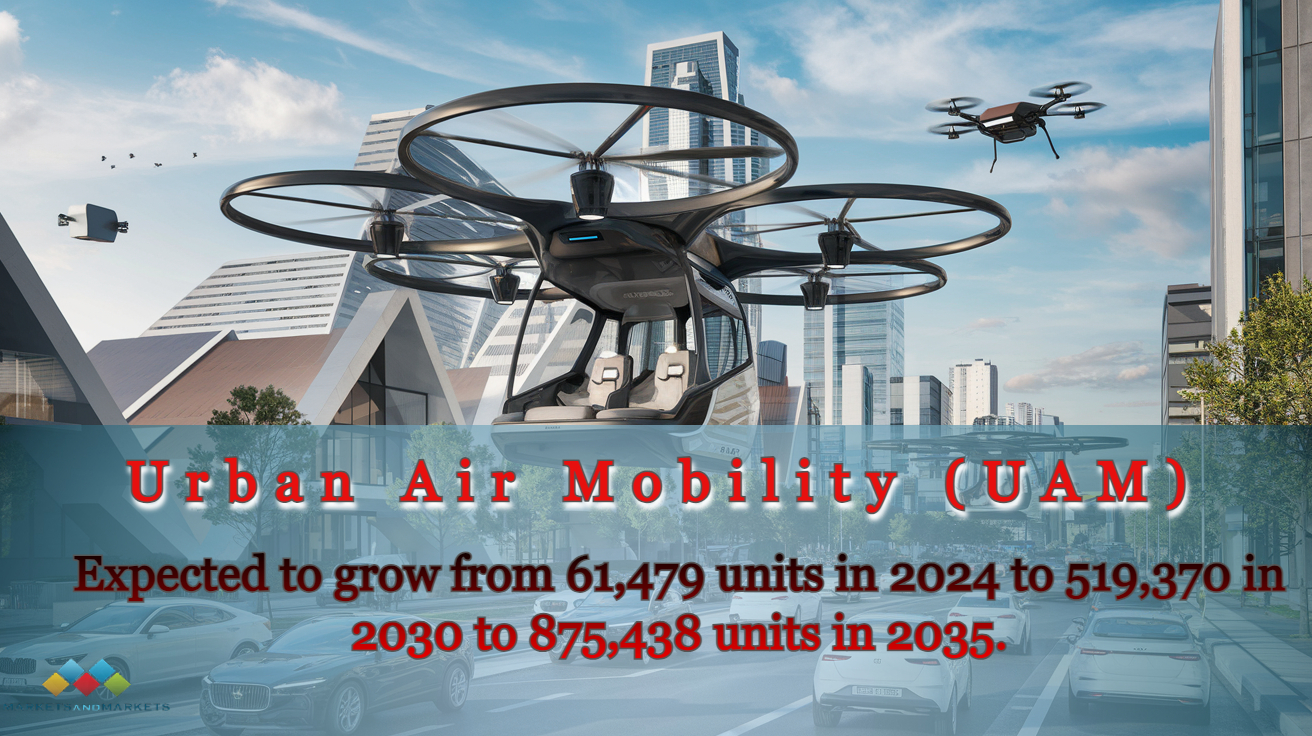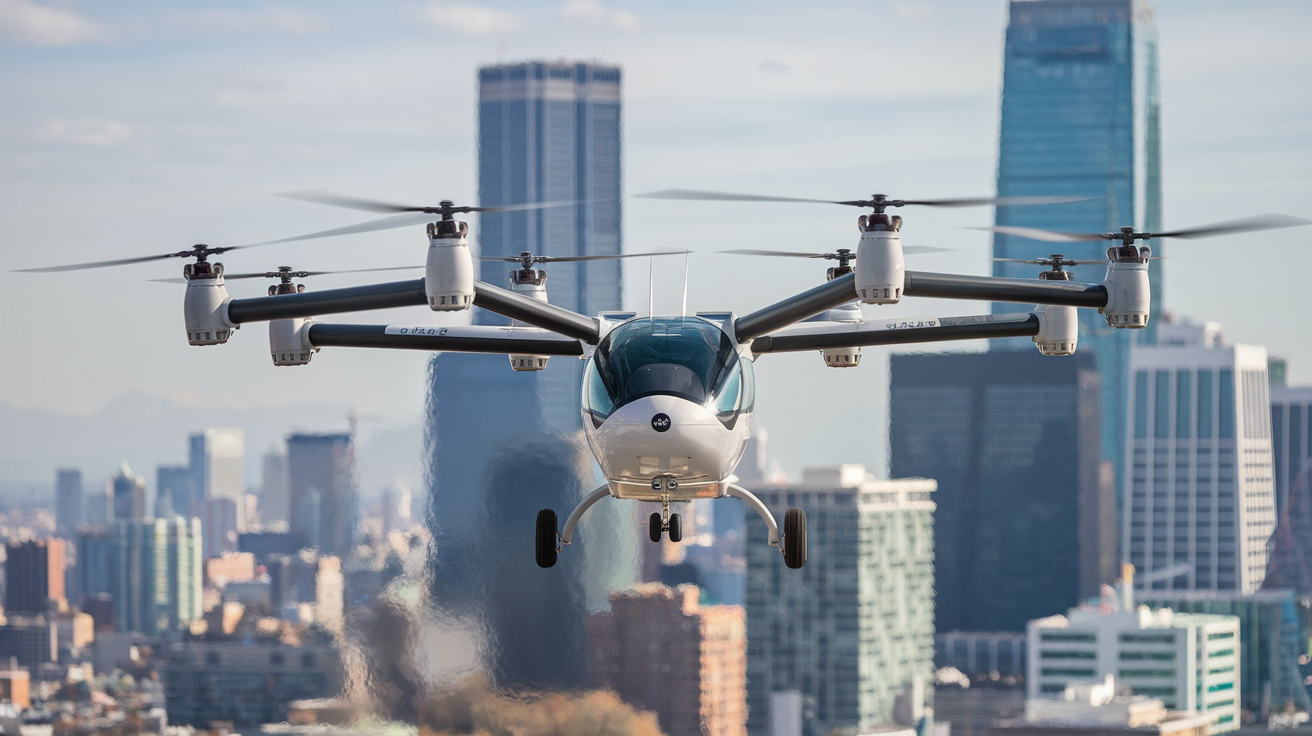Urban Air Mobility (UAM) represents the future of transportation, offering innovative aerial solutions to address growing urban congestion and mobility challenges. By utilizing electric vertical takeoff and landing (eVTOL) aircraft, UAM aims to provide fast, efficient, and environmentally friendly alternatives to traditional ground-based travel. Designed for short to medium distances within cities, UAM promises to revolutionize the way people and goods move, reducing travel times while cutting emissions and noise pollution. With advancements in autonomous technology and urban infrastructure, UAM is poised to transform urban transportation systems worldwide.
The Urban Air Mobility (UAM) market, valued at USD 4.6 billion in 2024, is projected to reach USD 41.5 billion by 2035, growing at a compound annual growth rate (CAGR) of 12.1% between 2024 and 2030. With the rapid development of cities and increasing road congestion in large urban areas, UAM presents an innovative solution to alleviate traffic challenges by utilizing air routes for faster, more efficient travel. The increasing population density in urban centers further underscores the need for alternative transportation infrastructures, making UAM an attractive option for urban planners and developers.
A key technology driving UAM is eVTOL (electric vertical takeoff and landing) aircraft, which are environmentally friendly and emit significantly lower noise compared to helicopters, reducing both emissions and noise pollution in cities. These factors contribute to the growing adoption of UAM solutions across the globe.
Key Market Drivers
- Rising Urban Congestion: With cities expanding and populations growing, road congestion has become a significant challenge. UAM offers an alternative by providing aerial transport that bypasses ground traffic, offering quicker and more direct travel options.
- Sustainability and Reduced Emissions: As eVTOL aircraft are electric, they contribute to lowering urban emissions compared to traditional combustion engine vehicles. This environmental benefit aligns with global efforts to reduce carbon footprints, making UAM a sustainable solution for urban transportation.
- Technological Advancements: Continuous improvements in technologies such as artificial intelligence (AI), autonomous flight systems, and advanced sensor systems are increasing the feasibility, safety, and efficiency of UAM vehicles, particularly in the autonomous segment.
Market Segmentation
- By Solution:
- The platform segment is expected to dominate the UAM market during the forecast period. This segment includes core technologies like eVTOL aircraft and associated systems. As UAM services expand, the need for advanced, efficient platforms will continue to grow, fueling demand for innovative technologies and solutions.
- By Mode of Operation:
- The autonomous segment is projected to see the highest growth. Rapid advancements in AI, machine learning, and sensor technology have improved the capability of autonomous UAM systems, increasing their operational efficiency and safety. The reduced need for pilots in autonomous systems also lowers operational costs, making UAM more scalable and economically viable.
- By End Users:
- Ride-sharing companies are poised to lead the market, integrating UAM into their existing service models to offer fast, direct urban air transportation. These companies already have a robust infrastructure, large customer bases, and expertise in managing on-demand services, making them ideal candidates to scale and deploy UAM solutions.
Regional Insights
North America is expected to hold the highest growth rate in the UAM market due to significant private and venture capital investments. Cities across the U.S. are rapidly developing the infrastructure necessary to support UAM, such as vertiports and charging stations, which are crucial for the mass deployment of UAM services. The need for efficient alternatives to reduce urban congestion is particularly pressing in major metropolitan areas. UAM’s ability to offer faster, more direct travel through aerial routes makes it an attractive solution for alleviating traffic congestion.
Top Industry Players
Several key players are shaping the future of UAM by developing innovative solutions and addressing the challenges of urban transportation:
- Lilium Aviation GmbH (Germany)
- Archer Aviation Inc. (US)
- Eve Holdings, Inc. (Brazil)
- Airbus (France)
- Ehang (China)
These companies are at the forefront of addressing urban congestion by focusing on the development of sustainable and efficient UAM technologies. Their efforts span across North America, Europe, Asia Pacific, the Middle East, and other regions, ensuring a global push toward the adoption of UAM solutions.
As urban areas continue to expand and face transportation challenges, the UAM market is well-positioned to offer a transformative solution. With its potential to reduce road congestion, lower emissions, and provide faster travel, UAM is set to revolutionize urban mobility. Backed by rapid technological advancements and increasing investments, the market is expected to see substantial growth, particularly in regions like North America, where infrastructure development and investment in UAM technologies are already underway.


